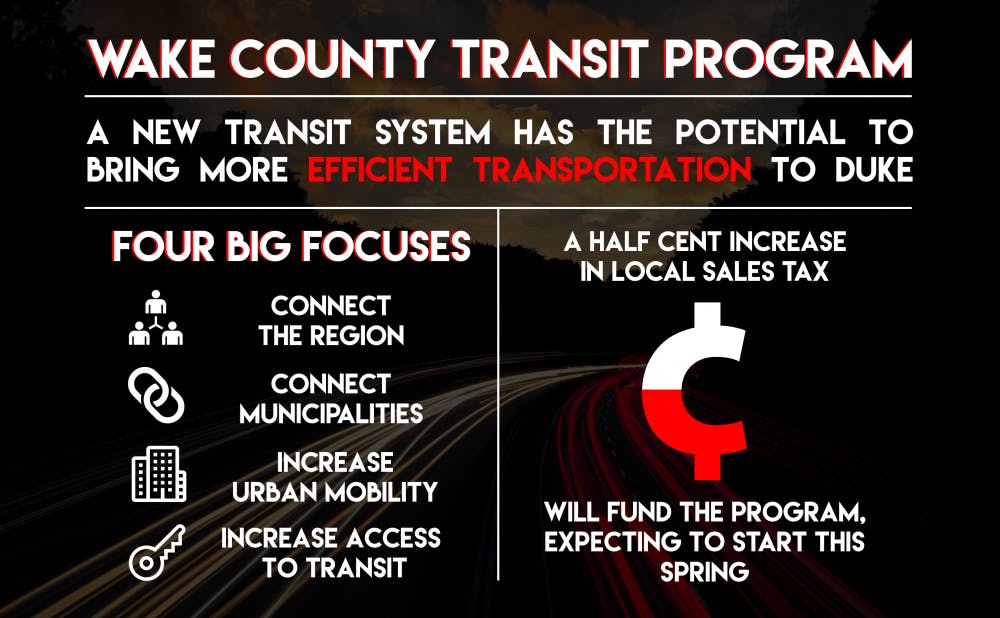The Duke community may stand to benefit from the passage of Wake County's transit tax.
During the elections earlier this month, the county—which includes Raleigh—passed a measure that allows a half cent increase in the local sales tax that will help fund the $2.3 billion Wake County Transit Program. The tax is expected to take effect this spring.
Tim Maloney, director of Wake County Planning, Development and Inspections, described Wake County's transit plan in “four big moves": connecting the region, connecting Wake County municipalities, improving frequent, urban mobility and increasing access to transit. The plan will initially expand bus service within the Raleigh area and create dedicated bus lanes on high-frequency corridors.
Longer term, the revenue will help finance a proposed 37-mile long commuter rail system, linking Raleigh and Durham with 12 proposed stations along existing tracks, including a stop near campus. This would be in addition to the Durham-Orange Light Rail project, which would connect Durham and Chapel Hill.
Commuter rail trains are larger and run at higher speeds than light rail systems.
“When we created this plan, one of the big recognitions was that our demographics in the Triangle region continue to change,” Maloney said, noting that populations of both children and older people are increasing.
These changing demographics are bringing people to the region who have lived in areas with more extensive transportation systems, which creates a larger demand for an improved system in the Triangle, he noted.
“We have a lot of migration from areas across the country where people have experienced certain levels of transit that, when they get to our area, we don’t have or don’t provide,” Maloney said.
Despite the demand, there is uncertainty about whether the Duke community will take advantage of the system when it connects to Durham.
Sophomore Carly Mirabile spent the past summer riding the subway in New York City. Mirabile said she had an good experience with the city's public transportation system overall.
However, despite expressing excitement about the prospect of an improved transportation system in the Triangle, Mirabile said she doubted many Duke students will regularly make use of it.
“I want to say I will use it a lot, but I know I will only use it if I have somewhere exciting I am going to,” Mirabile said.
Concerns about the proposal extend beyond the student population.
JoAnne Van Tuyl, associate professor of Slavic and Eurasian Studies, commutes to Duke from Orange County, which would be connected to Duke via the light rail system.
Van Tuyl expressed her approval of the new tax, but also said she doubted whether Duke faculty will take advantage of the commuter rail to Raleigh.
“Faculty really guard their time—not that it’s more valuable than anyone else’s,” Van Tuyl said. “I think that everybody’s heart is there but when it comes down to practicality, it’s pretty different.”
College students outside of Duke also doubt the likelihood of students using the system.
Jackson Kilgore, a sophomore at North Carolina State University, said he does not think that the Wake County Transit Program will have much of an effect on the region’s college student population.
“If I want to ever come to Duke, I would definitely take it,” Kilgore said. “But other than that, I wouldn’t really have much use for it.”
Despite doubt about how much the Triangle’s college community will use the new public transportation system, Mirabile, Van Tuyl and Kilgore said they still support the program’s funding and are excited about its implementation.
Get The Chronicle straight to your inbox
Signup for our weekly newsletter. Cancel at any time.

